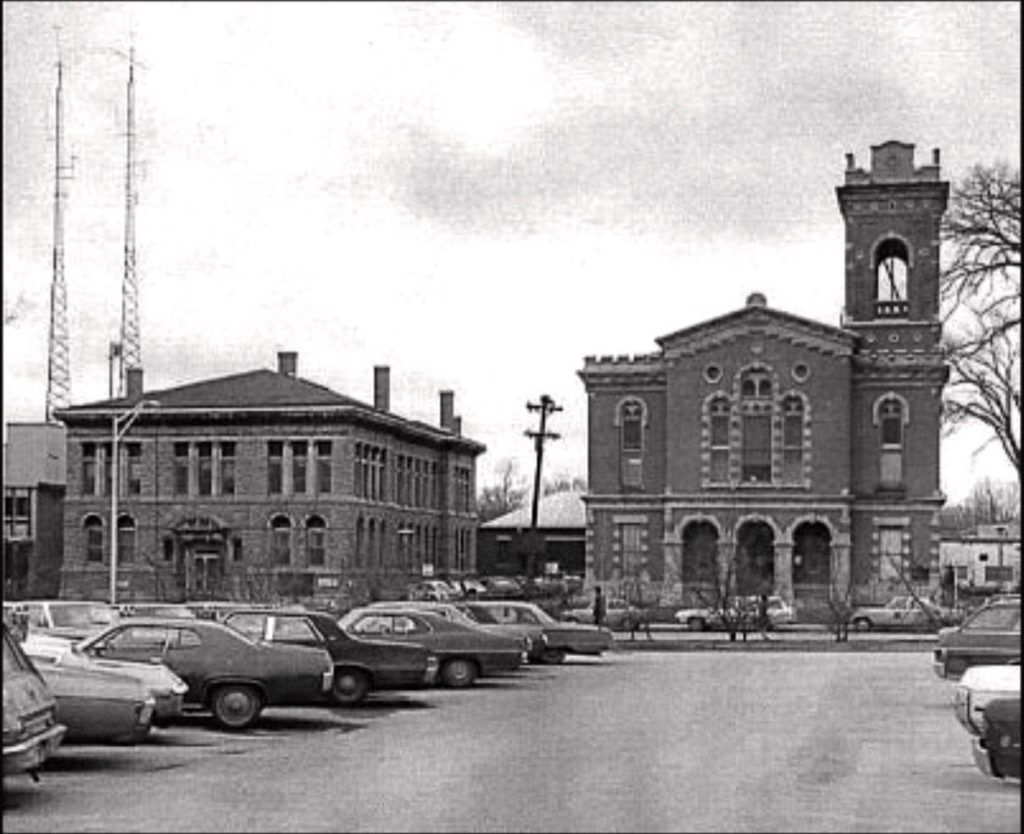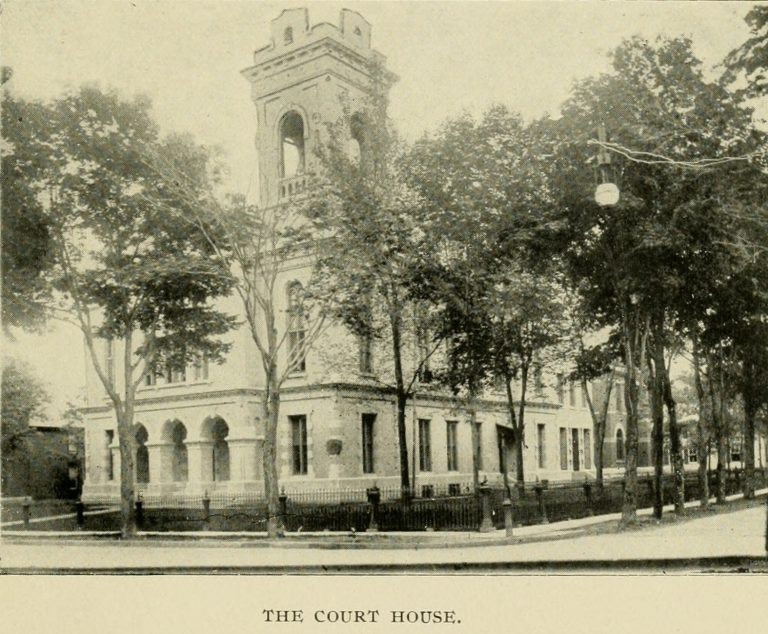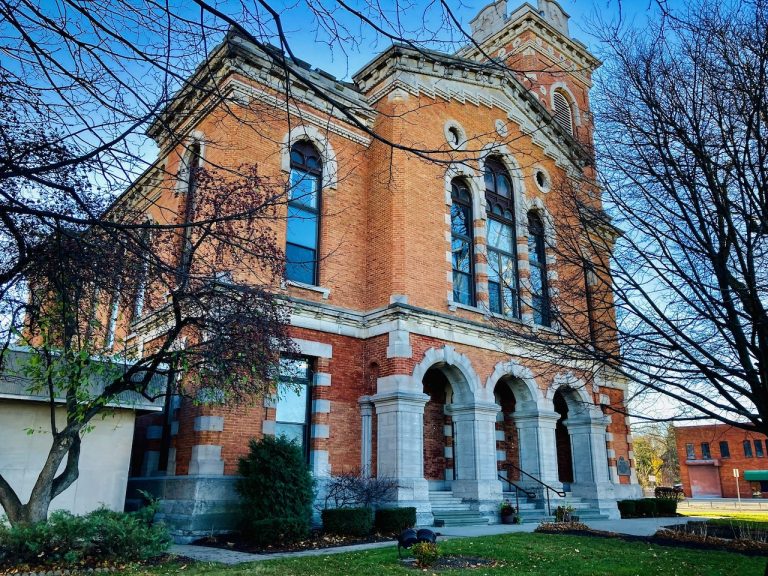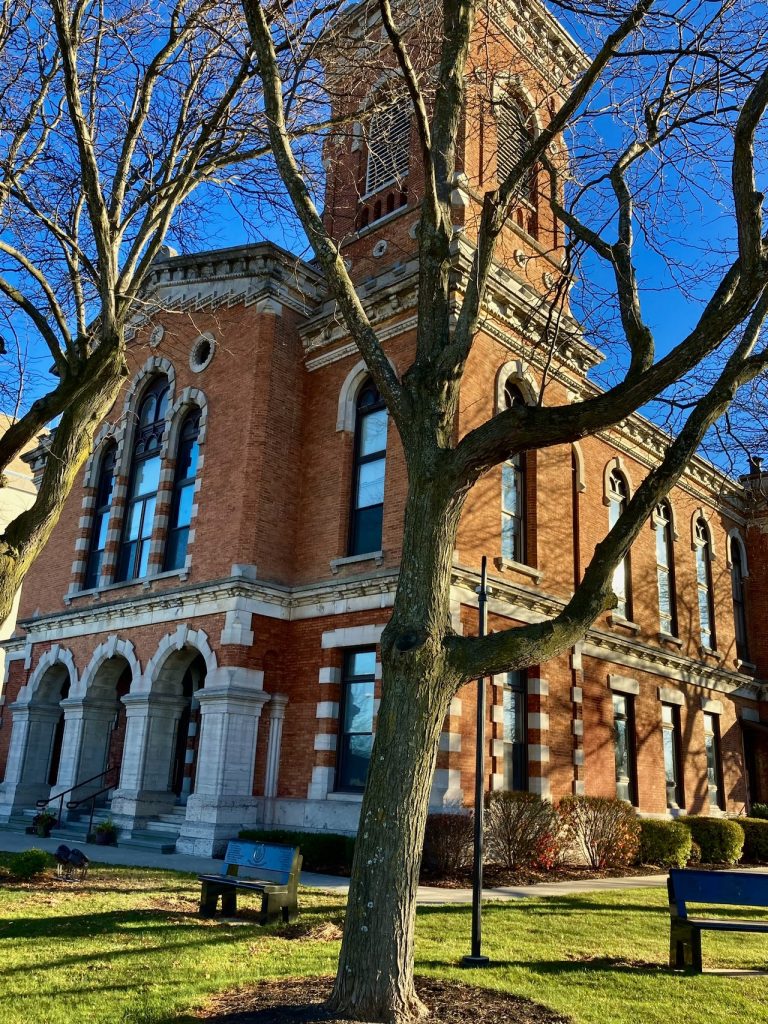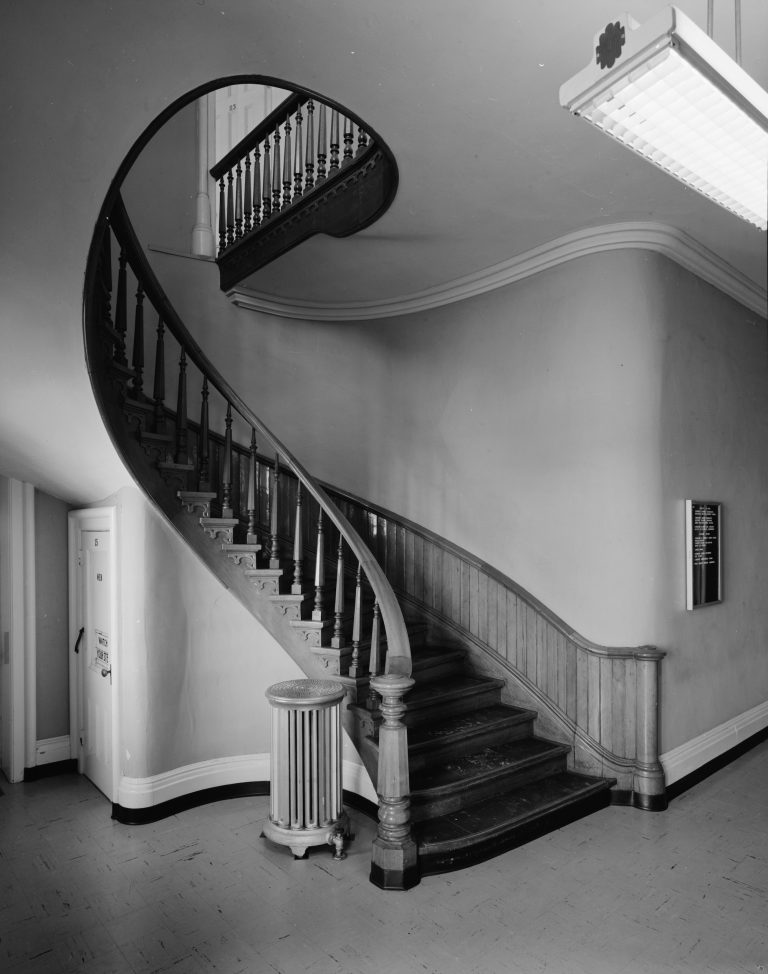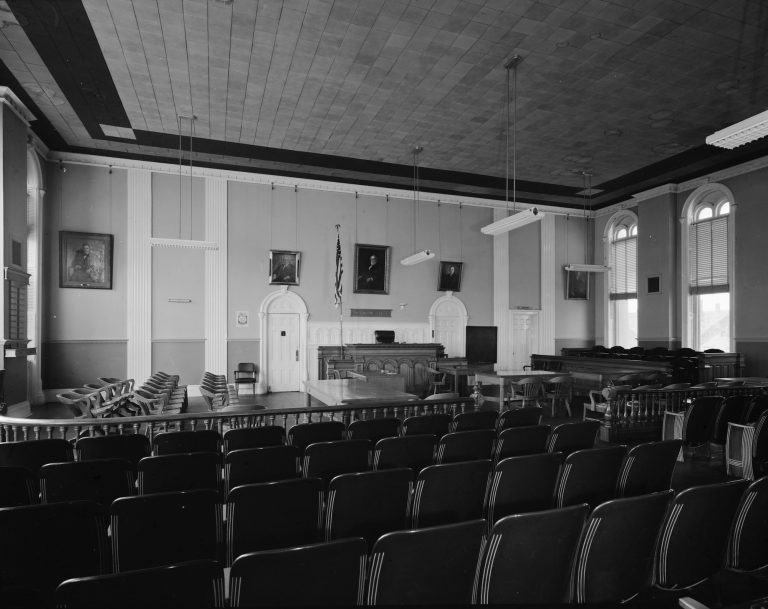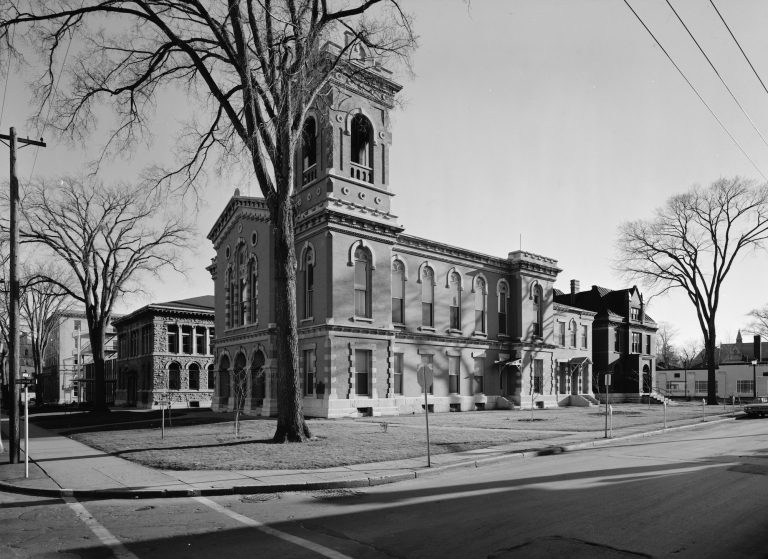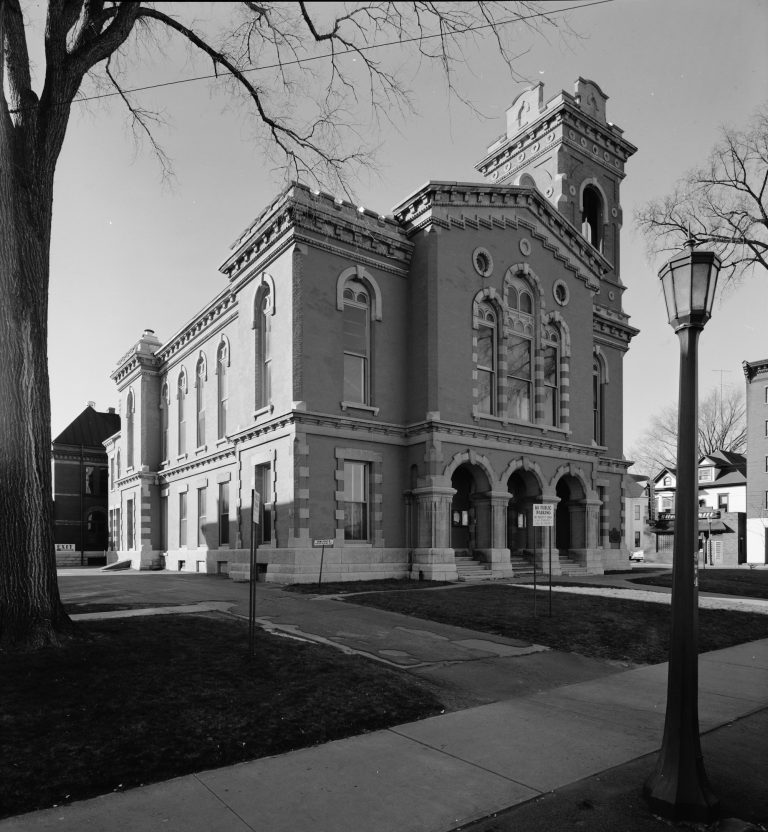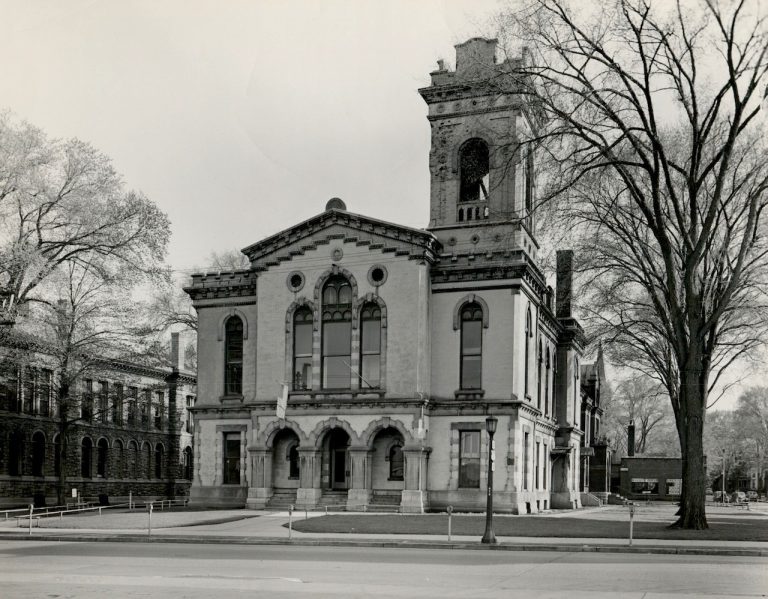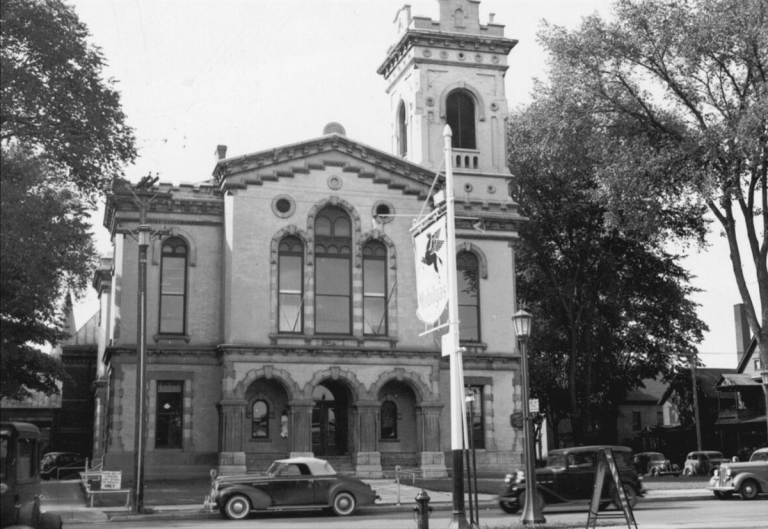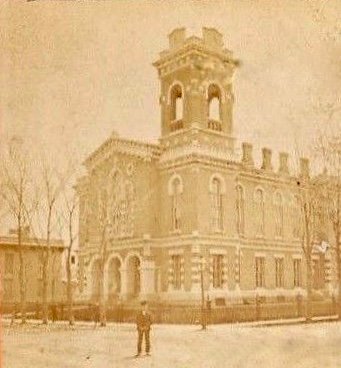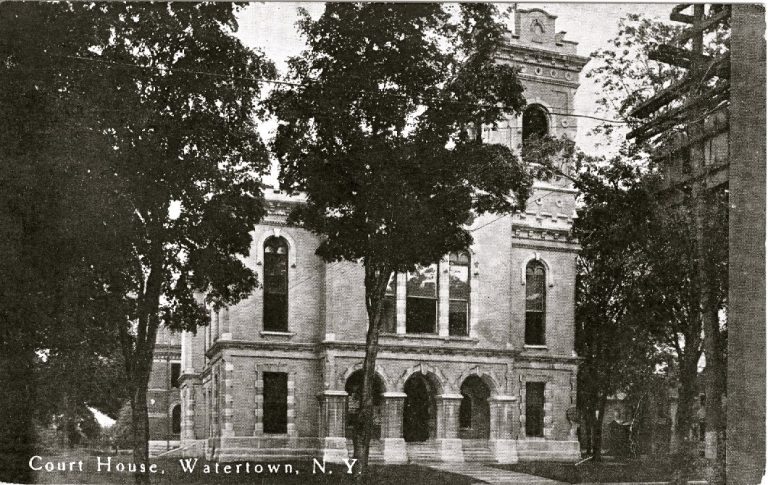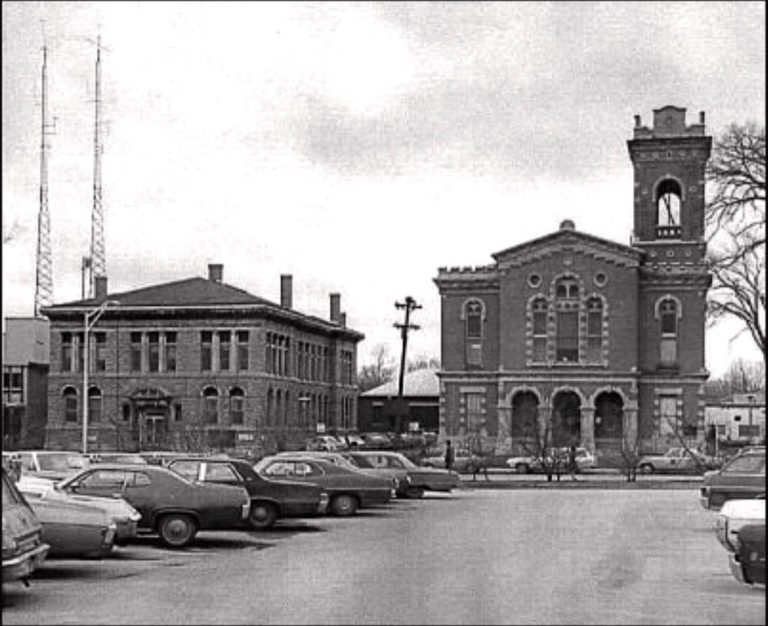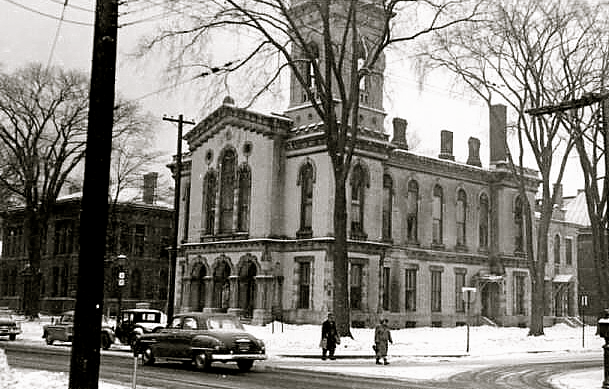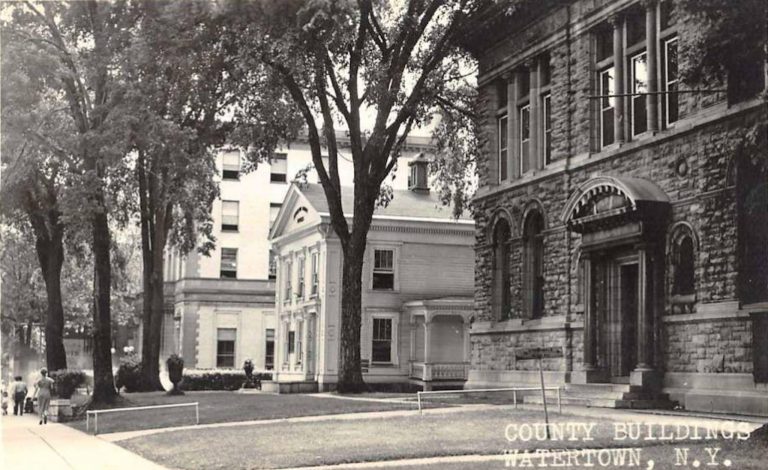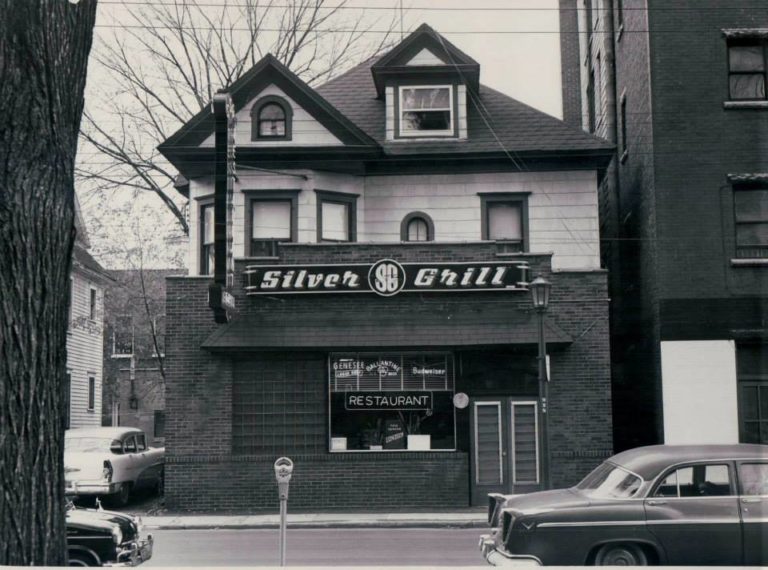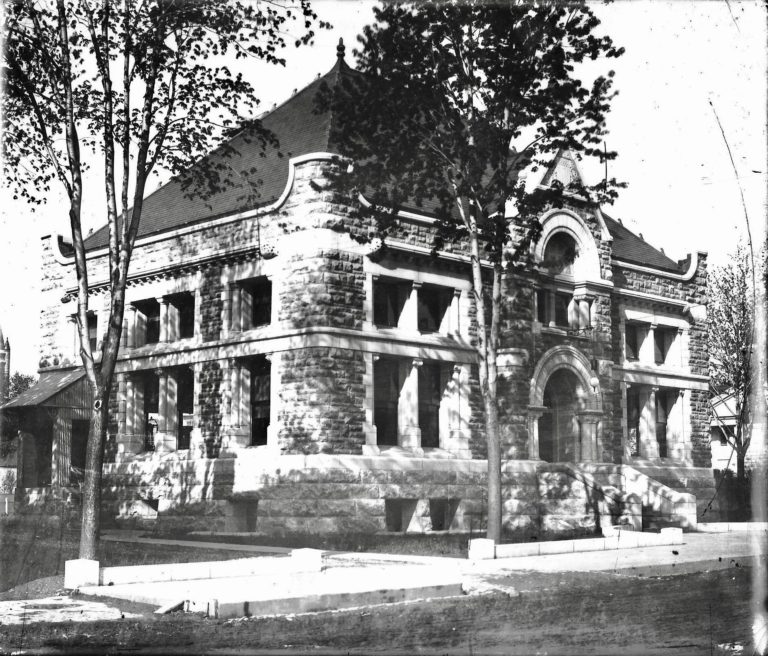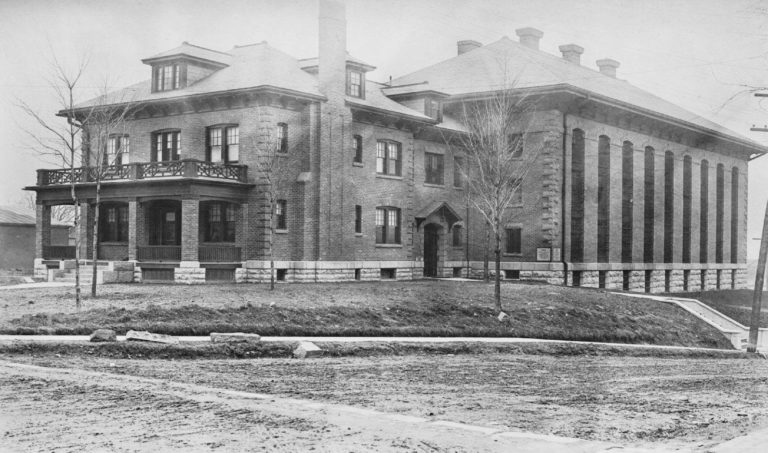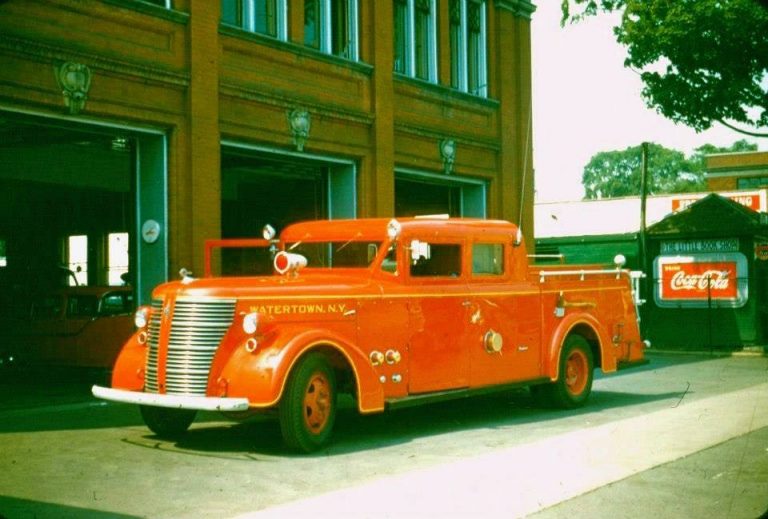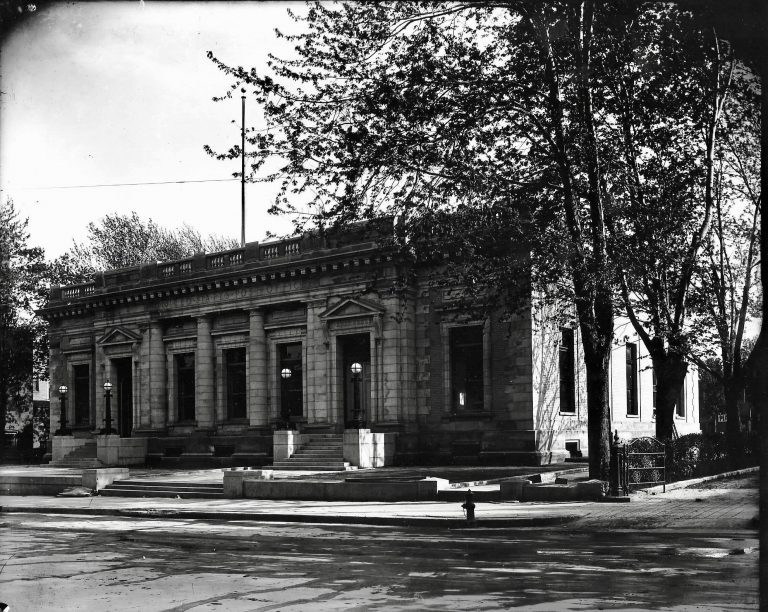The Old Jefferson County Courthouse On Arsenal Street – Still There!
Completed in 1862, the old Jefferson County Courthouse, which presently is home to the County’s Building and Grounds, was added to the National Register of Historic Places in 1974. The road to its construction was a bit of a tumultuous affair after the old County Courthouse on Court Street, completed in 1821, was stated in 1860 as being “several times indicted as a nuisance by successive Grand Juries, and abandoned by all the courts as wholly unfit for occupancy.”
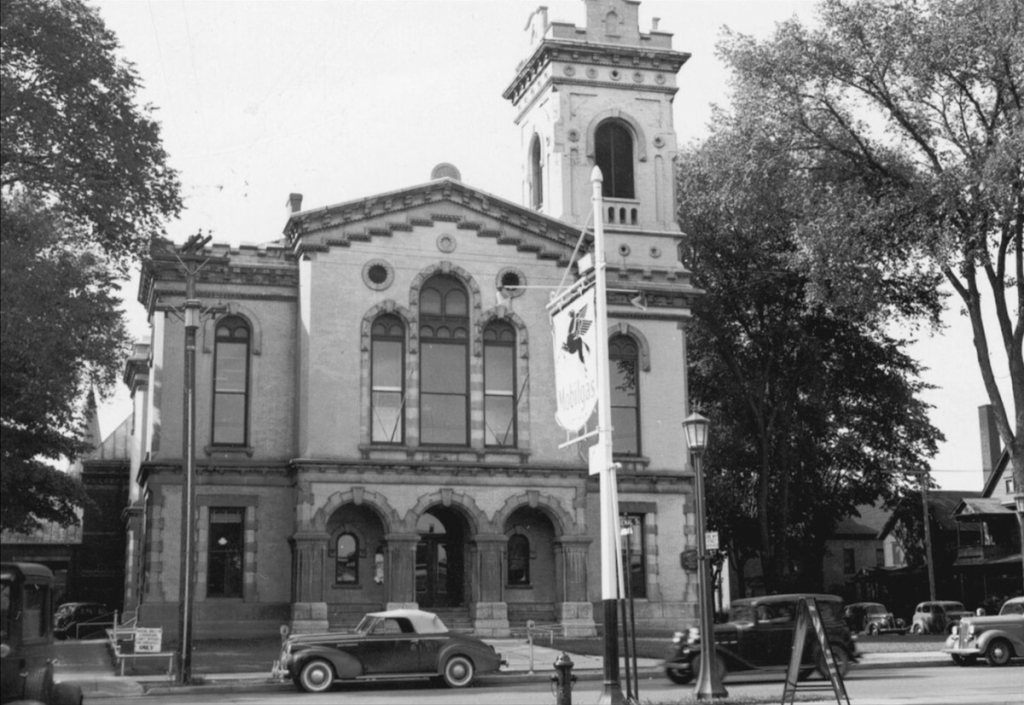
That courthouse replaced the original frame building that housed both the court and jail in a single-frame facility completed in 1807. It subsequently was destroyed by a fire on February 9th, 1821, and was replaced by a new Jefferson County Courthouse and separate jail located next to it at the confluence of Coffeen and Court Streets in another public square.
At the time, it was considered a fine specimen of architecture and the pride of the county, its construction costs totaled $6,000, which the County Supervisors borrowed against. Plans were submitted for a new jail by William Smith, one of the early pioneers in the county, and subsequently accepted. Jeremiah H. Bishop drew up the plans for the new Jefferson County Courthouse, which measured 44 x 48 feet. Some articles from the New York Reformer thereafter referred to it as the “Temple of Justice.” A newer County Jail replaced that particular jail c.1850.
Nevertheless, forty years later, the second Jefferson County Courthouse received the proverbial death sentence from its peers.
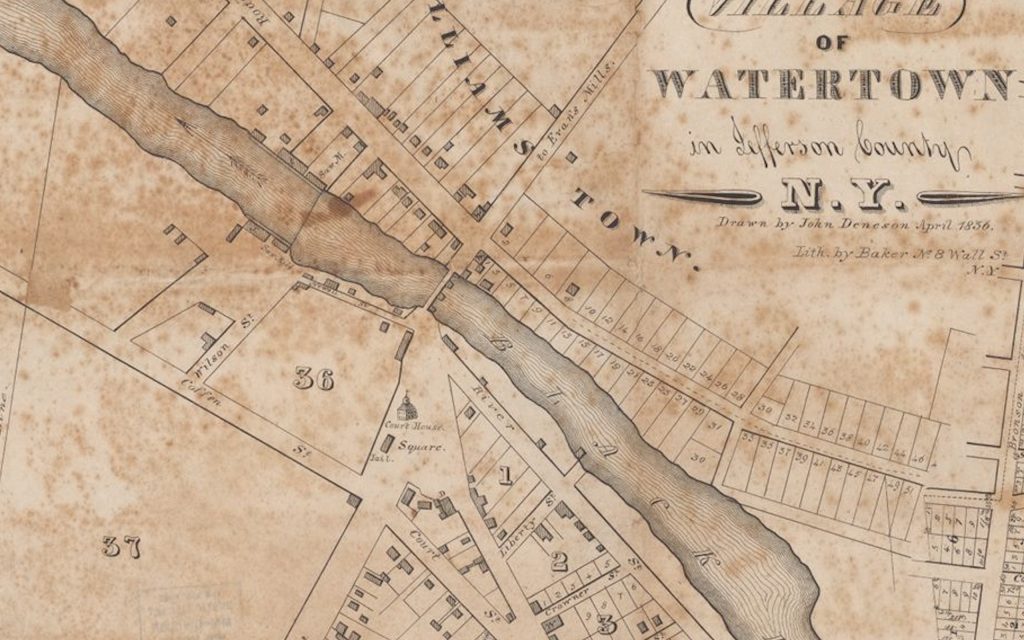
After the old Jefferson County Courthouse’s condemnation, the county’s Board of Supervisors leased space in Washington Hall for $250/year until repairs could be accomplished to an acceptable degree. At the same time, the Board of Supervisors also directed a committee to be formed to procure plans, drafts, and specifications for a new courthouse to be built on the present site, but other sites were considered, including what was believed to be the new location, the Arcade lot belonging to the Paddocks. Trinity Church‘s location on Court Street was also considered but voted down.
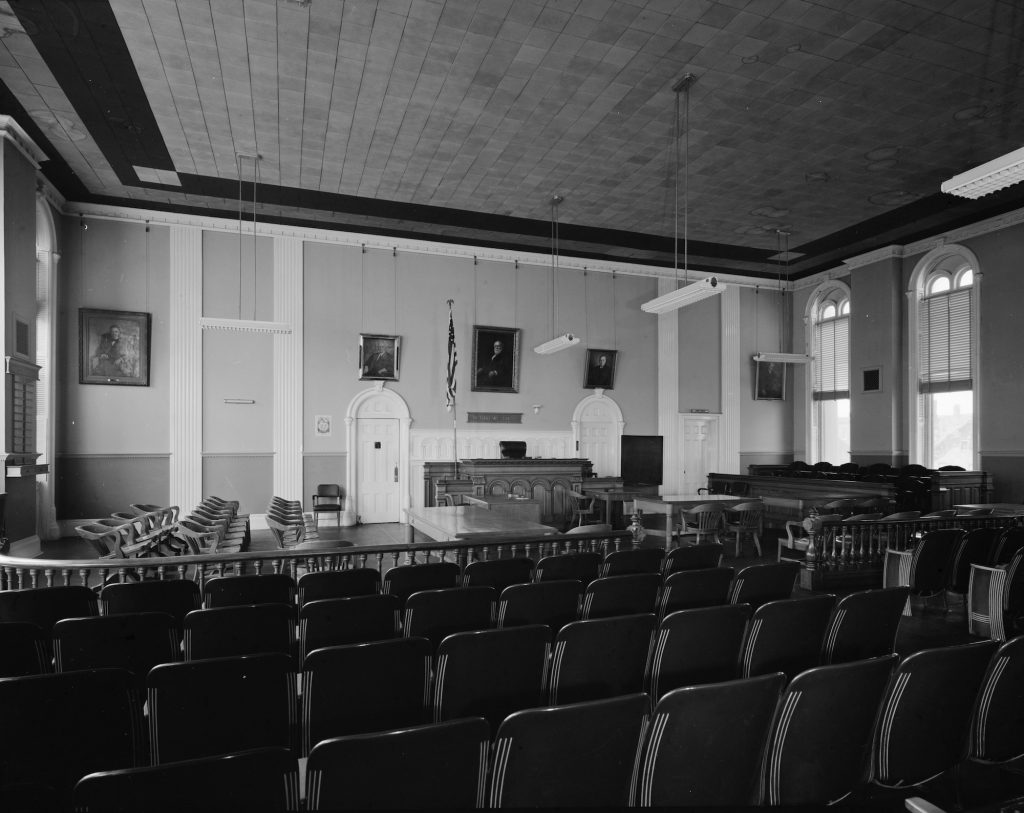
On January 17th, 1861, the New York Reformer published an article regarding the progress and the new courthouse site–
We have had handed us the voluminous proceedings of the Board of Supervisors at their late special session, to locate a Court House site. They would fill in extenso about two columns and a half of our paper. We do no perceive the need of spreading before the public the many motions, adjournments, votes, majority and minority reports, which strew the tortuous ways of their proceedings.
To do so would neither increase one’s estimate of the members of the Board nor enlighten him on the subject under consideration, nor lighten the tax, which the people will more cheerfully pay for a new court house than for time spent in factious endeavors to carry favorite schemes of outsiders, whose business interests are fancifully affected by the location.
The committee on building reported of their travels to Syracuse to see the court house of that city and its architect, Mr. (Horatio N.) White, whose drafts, plans and specifications the committee recommended the Board to adopt, and which were finally adopted, and the court house site changed to the corner of Arsenal and Benedict streets, known as the Buckley lot.
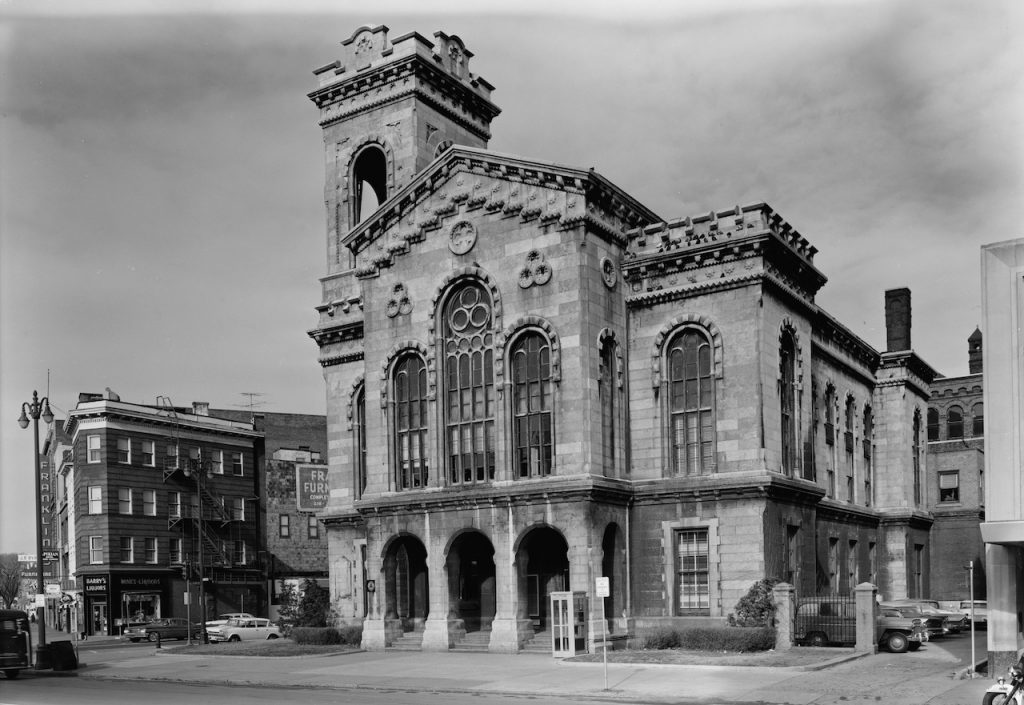
Other localities, particularly Adams, seemed to take exception to the new Jefferson County Courthouse construction, whether it was in Watertown or otherwise. The New York Reformer reported on December 13th, 1860–
The Adams News is overfull of bad feelings about the action of the Board of Supervisors, touching the erection of a new Court house. It makes sarcastic mention of the Watertown lobby, and various other ill-natured remarks bearing upon this subject. We take the responsibility of saying there was no lobby about the Board of Supervisors. On one or two occasions a few of our citizens came into the room merely to see what was done and hear the discussion. We venture to deny that any Supervisor was labored with, in any form, by Watertown citizens on behalf of a new Court House.
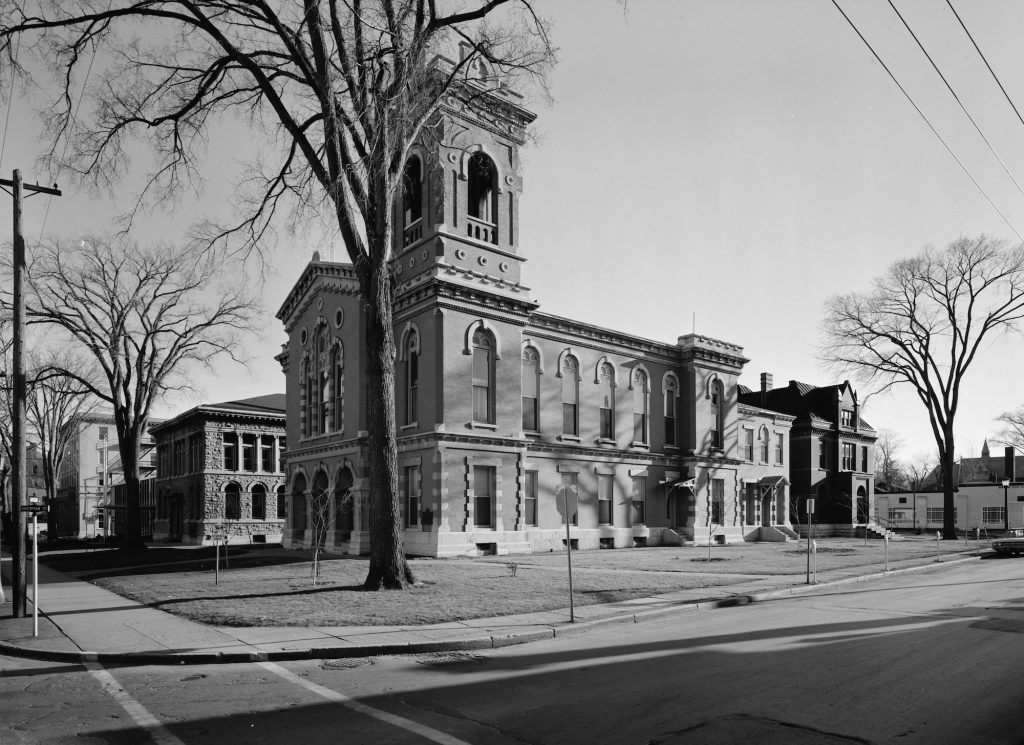
The court was to be built at a cost of no more than $25,000 (it initially came in at $24,488.89), but according to the New York Reformer, the Adams News kept inflating the price to which the Reformer reported to its own readers–
As We Expected—The Adams News has at last reached its ultimatum. It has told the story with “additions” till it has reached $100,000 as the cost of the new Court House! There is a book known as Guilliver’s Travels, filled with the untruthful stories which some people place in the hands of their children to cure them of too great credulity. But Gulliver’s Travels will not be necessary where the News circulates.
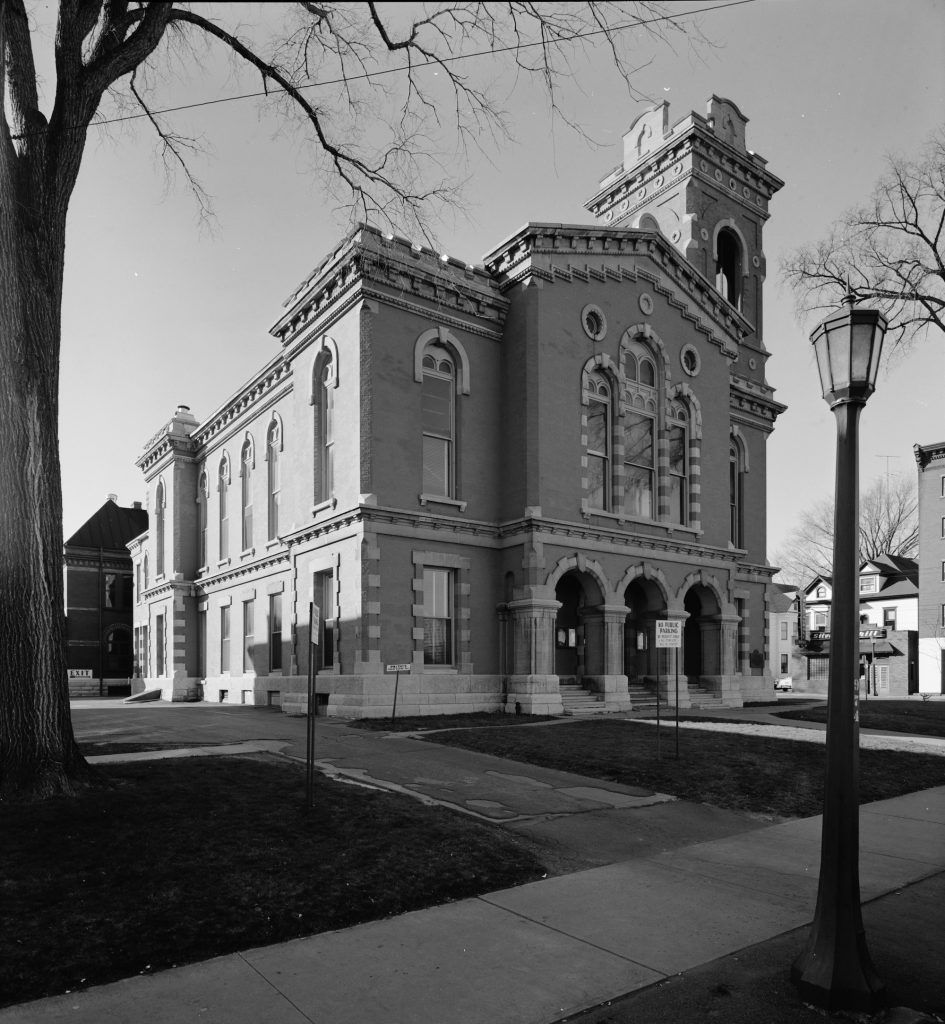
Early in 1861, the “Old Court House on the Hill” was systematically taken down, and a piece was used for the new Jefferson County Courthouse cornerstone. Maj. John Haddock wrote in his The Growth of a Century—
The building was completed in 1862, at a cost of $25,488.89, furnished. The roof over certain portions of the building was imperfect and considerable sums of money were expended to repair and complete it. The basement was ill-drained, and until the sewerage of the city was completed along Arsenal Street, it was a foul and unhealthy condition; but drains connecting with teh main sewer soon obviated that difficulty, though at considerable expense.
The entire expense of the court house, as it now stands is not far from $35,000. It is built of brick, with stone trimmings and portico, and has an area of about 70 feet front on Arsenal Street by 120 feet on Benedict Street. It has two stories, and is provided with a fire-proof clerk’s office in the rear of the building, and is surmounted with a tower in good proportionate dimensions to the balance of the edifice, and with a well-kept lawn is an ornament to the city and a credit to the county.
The building would serve its function as a courthouse until 2004, when the new Jefferson County Court Complex opened as an addition to the former post office building just down Arsenal Street.
